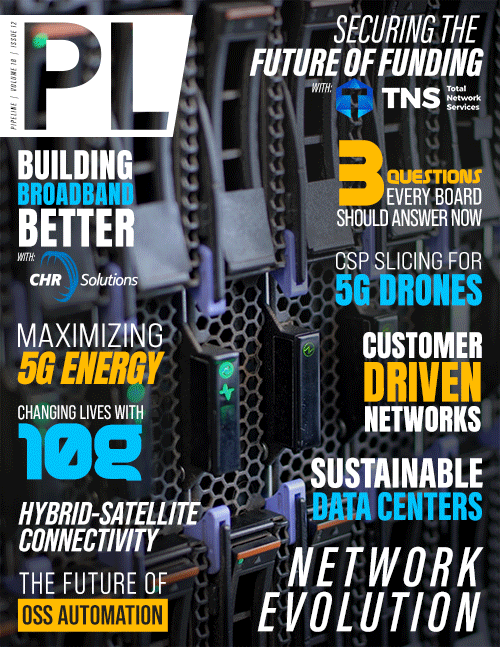Building Broadband Better with CHR
The other infrastructure development involves Internet service providers (ISPs) overbuilding larger, more densely populated areas in an effort to deliver better service, grow market penetration, and drive higher return on investment. With private equity funding, the drivers in this market are different, but once funded, the build process is the same.
The availability of billions of dollars is, in effect, creating a land grab among providers—and navigating the application process to successfully secure funding can be complex. Providers must adhere to programs’ Notice of Funding Opportunities (NOFO), which describe the requirements under which an agency will award funding grants as instructed by a specific law. The process involves completing an application, with narrative and technical requirements, and applications are evaluated and awarded on a point system.
“There are typically multiple companies bidding to buildout a specific area,” commented Kevin Kutcher, Vice President of Marketing at CHR. “With our expertise in the funding application process, we can help clients adhere to NOFO requirements and maximize the points they receive with their applications.”
As a result, CHR is helping service providers accelerate and secure funding through these wide-ranging, complex, and cumbersome programs. CHR also provides the engineering design and capital expenditure costing required by grant applications and can satisfy specific requirements, such as providing a professional engineer to sign off on environmentals. For private investment funding, CHR provides all technology support needed to secure financing, long-range system planning, and system design and cost analysis.
Transforming paper processes to real-time digital
For over 75 years, CHR has partnered with telephone and cable companies, electric co-ops, and municipalities to successfully implement a variety of communication networks. As the market has changed, and the focus has tipped toward high-speed broadband, CHR has turned to the latest in advanced technologies and tools to transform the traditional approach to network engineering. Like many processes ripe for transformation, this traditional approach is complex, painful, and paper-based. As Bob Bartz, Vice President of Engineering Services at CHR describes it, the old approach was to create a high-level design, put it into AutoCAD or similar program, and cut it into staking sheets for the field engineers to take onto the job. In the field, the engineers would redline the sheets with the route, scan them at the hotel or site, and feed them to the Computer-Aided Design (CAD) group, who would input into the CAD design. The design would be sent to a design engineer, who would use the data to initiate the design or make changes.
“It’s about eliminating the paper process and the issues that it creates: from manual scanning to legibility issues, to errors, and more,” said Bartz. “But beyond that, it’s about speed to market.” Bartz went on to add that until recently, companies like CHR would be engineering a full year out from build. Today there are new drivers, from the momentum of investment, increased competition, and supply chain considerations. An accelerated timeline is especially critical given the requirements for funding. Providers need completed designs and a bill of materials, with lead times for fiber that now are stretching to a year or more. In a quest to address these new market pressures, CHR revamped its engineering process with new tools, including ArcGIS by Esri. ArcGIS is a geographic information system (GIS) software, location intelligence, and mapping tool.
Senior systems engineer Barak Harlan at CHR explained, “ArcGIS takes publicly available information—like environmental data, census data, and urban development data on multi-dwelling units—and seamlessly adds it to engineering designs. It can



















